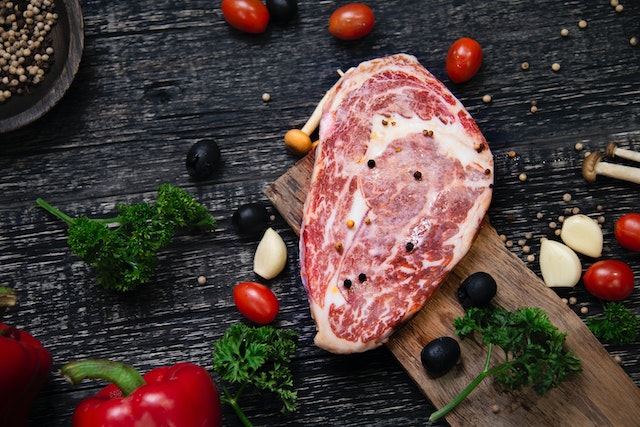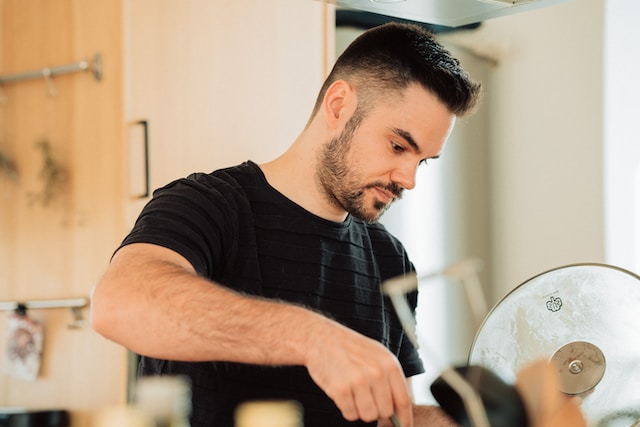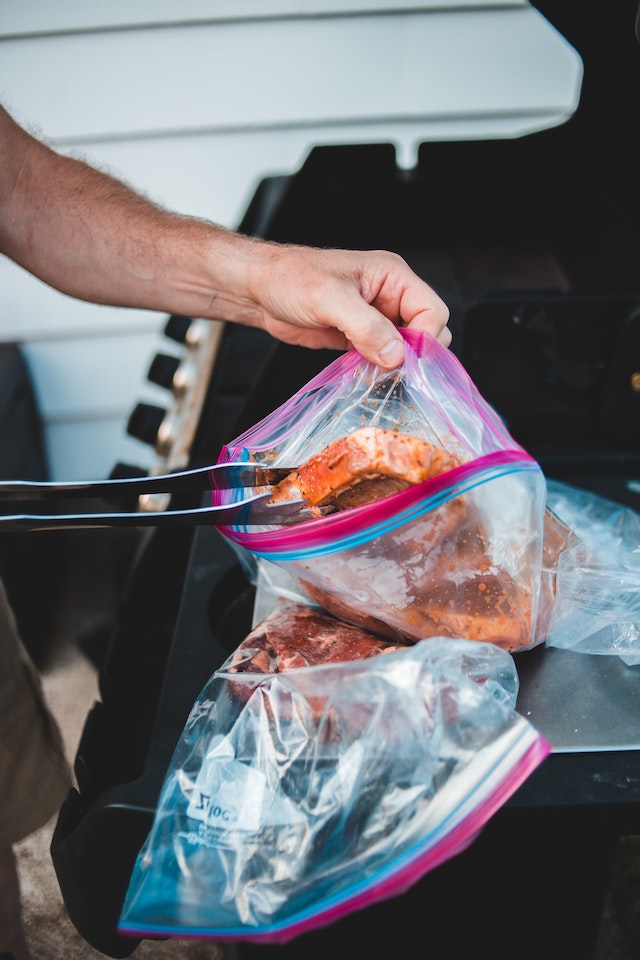
The art of cooking is one that has been perfected over centuries, with each generation passing on their knowledge and skills to the next. From simple recipes to complex culinary techniques, the world of food is a constantly evolving one. One of the latest cooking methods that has taken the culinary world by storm is Sous Vide.
Sous Vide is a French term that can be translated to “under vacuum.” Essentially, this technique involves vacuum sealing food in a plastic bag and cooking it in a precisely controlled water bath. The food is cooked at a low temperature for an extended period of time, resulting in a perfectly cooked dish that is evenly cooked throughout.
Benefits of Sous Vide
Sous Vide cooking has become increasingly popular amongst food enthusiasts and professional chefs due to the numerous benefits it offers. In this section, we will explore some of the advantages of Sous Vide cooking and how they can make a difference in your kitchen.
Enhanced Flavor Retention
One of the biggest advantages of Sous Vide cooking is its ability to retain the natural flavors of the food being cooked. Traditional cooking methods often involve high heat, which can cause the food to lose its moisture and flavor. Sous Vide, on the other hand, locks in the flavor by cooking the food in a vacuum-sealed bag at a low temperature for an extended period of time. This results in a dish that is richer in flavor and has a more intense aroma.
Precise Temperature Control
Sous Vide cooking offers a precise temperature control that is not possible with traditional cooking methods such as frying or baking. With Sous Vide, you can set the temperature exactly to the degree you want.

The cooking process will maintain that temperature throughout the cooking time. This precision ensures that the food is cooked evenly and accurately every time, giving you consistent results with each dish.
Nutritional Benefits
Since Sous Vide cooking requires little to no added fat or oil, it is a healthier alternative to traditional cooking methods. Cooking food at a low temperature allows it to retain its nutrients, which can be lost during high-temperature cooking. Additionally, since the food is cooked in a sealed bag, it retains its natural juices, which can be used to make sauces or gravies.
It Saves Time
One of the best things about Sous Vide cooking is that once you have set the temperature and cooking time, you can walk away and focus on other things. Since the cooking time is longer, you can prepare the dish in advance and then let it cook, freeing up your time for other tasks. Additionally, since there is less need for monitoring, you can easily multitask in the kitchen.
Versatility
Sous Vide cooking can be used for a variety of dishes, from vegetables and meats to desserts and cocktails. Whether you are making a steak, chicken breast, salmon or veggies, Sous Vide cooking can take your cooking skills to the next level and produce restaurant-quality results every time.
Sous Vide Equipment and Setup
Sous Vide cooking may seem daunting to beginners, but the truth is that it is a surprisingly simple process. The key is to have the proper equipment and setup to ensure that your Sous Vide cooking experience is seamless.
Sous Vide Machine or Immersion Circulator: This is one of the most important tools you will need for Sous Vide cooking. It is essentially a device that heats water to a precise temperature and circulates it around the food, ensuring even cooking. Most Sous Vide machines come with a temperature display and timer, which makes cooking with precision a breeze.
Vacuum Sealer: To ensure that your food is cooked evenly, it is essential to vacuum seal it in a plastic bag. This helps to remove any excess air and ensures that the food is in direct contact with the water, resulting in even cooking. You can either purchase a dedicated vacuum sealer or simply use a zip-lock bag with the air removed using the water displacement method.
Vacuum Sealable Bags: When selecting vacuum sealable bags, it is important to choose bags that can withstand high temperatures.

Sous Vide cooking requires bags that can withstand temperatures of up to 212°F (100°C) and are food-grade safe. You can purchase vacuum sealable bags online or at your local kitchen supply store.
Water Bath: A large vessel or container that can hold the Sous Vide machine or immersion circulator and enough water to cover the food being cooked. It is important to ensure that the water bath is stable and can maintain the temperature set on the Sous Vide machine or immersion circulator.
Setting up your Sous Vide equipment is relatively straightforward. Here is a brief outline of the steps involved:
- Fill the water bath with enough water to cover the food being cooked.
- Set up the Sous Vide machine or immersion circulator and attach it to the water bath.
- Preheat the water to the desired temperature, as per the recipe.
- Season and prepare the food as per the recipe.
- Place the food in a vacuum sealable bag and seal it using the vacuum sealer.
- Place the bag in the water bath and ensure that it is completely submerged.
- Set the timer as per the recipe and let the Sous Vide machine or immersion circulator do its job.
With the right equipment and setup, Sous Vide cooking can be a fun and rewarding experience.
Sous Vide Cooking Techniques
Sous Vide cooking is a technique that allows for precise temperature control and even cooking. Here are a few techniques that can help you get the most out of Sous Vide cooking:
1. Pre-Seasoning: When preparing food for Sous Vide cooking, it is important to season it beforehand. This will allow the flavor to penetrate the food and enhance the overall taste.
2. Temperature Control: One of the key advantages of Sous Vide cooking is its precise temperature control. It is important to set the temperature correctly to ensure that the food is cooked evenly and to your desired level of doneness.
3. Searing: After the food is cooked Sous Vide style, it is important to sear it to give it a crust and additional flavor. This can be done by using a skillet or a blowtorch.
4. Bagging Techniques: When vacuum sealing food for Sous Vide cooking, make sure to remove excess air from the bag. This will help the food cook evenly and reduce the risk of bacteria growth.
5. Marinades: Marinades can be incorporated into the vacuum-sealed bag to add additional flavor to the food. Make sure to adjust cooking time and temperature to account for the marinade.
Expanding Culinary Possibilities with Sous Vide
Sous Vide cooking offers many possibilities for expanding your culinary repertoire. With its precise temperature control and even cooking, it allows for a wider range of dishes and techniques.
Here are a few ways that Sous Vide cooking can help you take your cooking to the next level:
Low-Temperature Cooking
Sous Vide cooking allows for low-temperature cooking of meats, resulting in a tender and juicy end product. This is particularly useful for tougher cuts of meat, such as brisket, which can be cooked Sous Vide style for extended periods of time, resulting in a melt-in-your-mouth texture.

Consistency in Texture
One of the biggest advantages of Sous Vide cooking is the consistent texture it provides. Unlike traditional cooking methods, where the temperature can fluctuate, Sous Vide cooking maintains a constant temperature throughout the cooking process, resulting in an even texture. This can be particularly useful for delicate dishes, such as fish, where the texture can be easily overcooked.
Meal Prep
Sous Vide cooking is an excellent technique for meal prep, as it allows for the food to be cooked in advance and then held at the precise temperature until it is ready to be served. This can be particularly useful for busy weeknights or when hosting a large dinner party, as it frees up your time to focus on other tasks.
Customization
With Sous Vide cooking, you have complete control over the temperature and cooking time, allowing you to customize your dishes to your exact preferences. This can be particularly useful for steaks, where different cuts and preferences require different cooking times and temperatures.
Incorporating Sous Vide into Everyday Cooking
Sous Vide cooking may seem like a technique reserved for professional chefs, but it is actually a versatile method that can be incorporated into everyday cooking. Here are some tips for using Sous Vide in your daily meal preparation:
Vegetables: Sous Vide is not just for meat and fish. Vegetables can also benefit from this cooking method. Blanch vegetables first and then place them in the water bath for a few hours to cook. This results in perfectly cooked vegetables that are flavorful and not overcooked.
Eggs: Sous Vide is a perfect method for cooking eggs. You can cook them at a lower temperature which results in a soft, custardy texture that is hard to replicate using other methods.
Infusing Flavors: Sous Vide is a great way to infuse flavors into your food. Simply add herbs and spices, or liquids to the vacuum-sealed bag before cooking and the flavors will be absorbed during the cooking process.
Sous Vide Cocktails: Yes, you read that right. Sous Vide can even be used to make cocktails, particularly those that require infusing flavors into alcohol. Simply vacuum-seal the ingredients and then place the bag in the water bath with the Sous Vide machine set at a low temperature.
Sous Vide cooking is a unique and precise method that can greatly enhance the flavor, texture, and consistency of your dishes. With its ability to retain natural flavors and nutrients, and its flexibility in the kitchen, Sous Vide cooking is a great technique to elevate your cooking skills. Whether you are a seasoned chef or a beginner cook, why not give Sous Vide a try and take your culinary creations to the next level?
